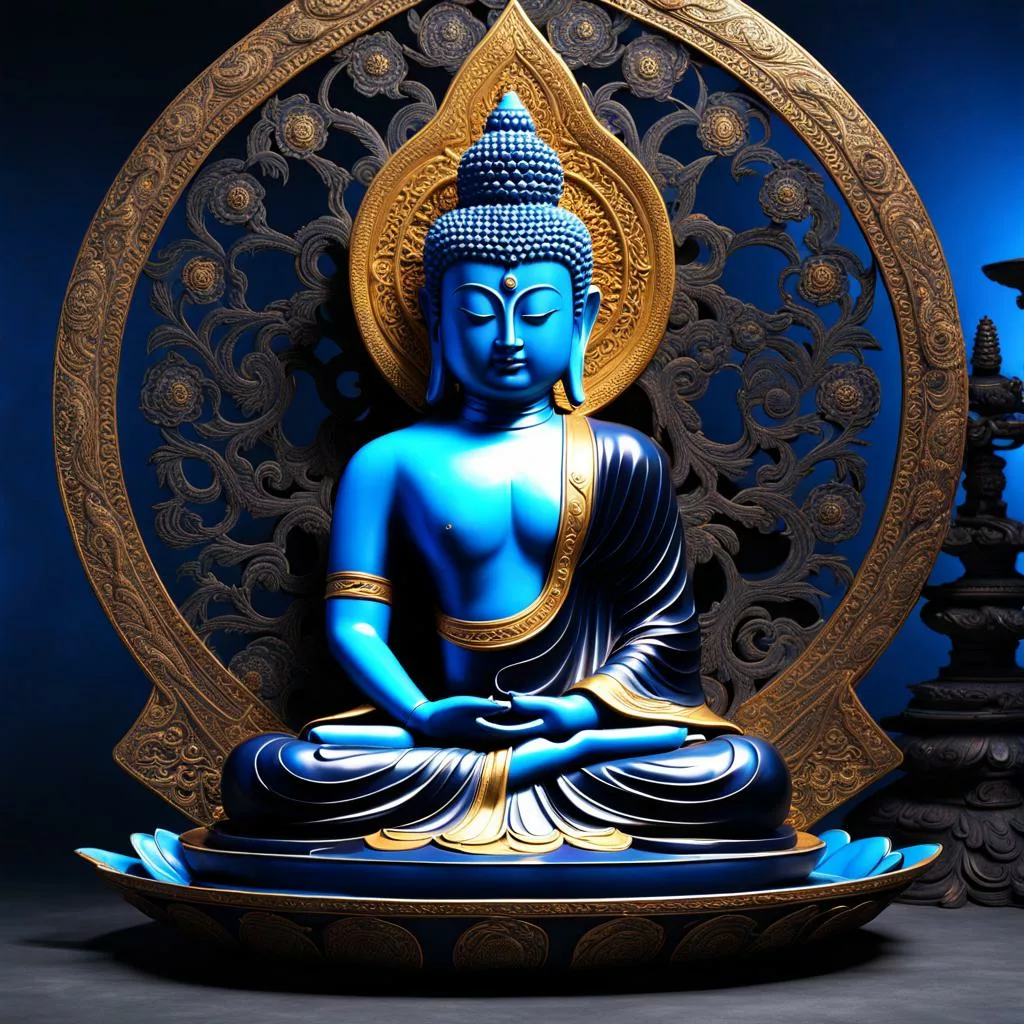
The Adi Buddha, also known as Ādibuddha in Sanskrit, is a concept found primarily in Tibetan Vajrayana Buddhism. It literally translates to “Primordial Buddha.”
As I understand it –
Meaning and Significance:
- The Adi Buddha represents the ultimate reality, the source from which all Buddhas and enlightened beings emanate.
- It embodies the Dharmakaya, the truth body of a Buddha, which represents the essence of reality itself.
- Understanding the Adi Buddha is crucial in Vajrayana practices that involve visualizing Buddhas and deities during meditation.pen_spark
Secrets of Meditation for Anxiety
Like millions of people, you may have suffered from anxiety for years. Meditation, yoga, peaceful music – it never works. It takes too long, and it’s not stable. Why? Because peace is treated as a cause for freedom, but it’s not – it’s the result. The cause to free yourself from anxiety is completely different.
Click now to Overcome Anxiety for good.
Table of Contents
Summary Adi Buddha
| Property | Description |
|---|---|
| Central Concept | Adi Buddha (Sanskrit: Ādibuddha) |
| Meaning | Primordial Buddha |
| Context | Tibetan Vajrayana Buddhism, dharma |
| Related Concepts | Kāya (three bodies of a Buddha), Buddha-nature, Vajradhara |
| Explanation | The Adi Buddha is a primordial being from whom all other Buddhas emanate. It represents the ultimate reality, the Dharmakaya (truth body) of all Buddhas. |
| Depiction | Often depicted with a white body, symbolizing purity and all-encompassing nature. |
| Significance | Seen as the source of all enlightenment and the essence of all Buddhas. Understanding the Adi Buddha is essential in Vajrayana practices of visualizing Buddhas and deities. |
| Contrast with Theravada | Theravada Buddhism does not have the concept of an Adi Buddha. |
| Example | The Adi Buddha Vajradhara is a central figure in Vajrayana practices. |
Adi Buddha Related Terms
- Vajrayana Buddhism
- Tibetan Buddhism
- Primordial Buddha
- Dharmakaya (truth body)
- Buddha-nature
- Vajradhara
- Kāya (three bodies of a Buddha)
Related concepts:
- Theravada Buddhism (contrast)
- Siddhartha Gautama (historical Buddha)
- Enlightenment
- Nirvana
- Buddhist meditation
- Deity visualization
General Buddhism keywords:
- Karma
- Samsara
- Four Noble Truths
- Eightfold Path
- Bodhisattva
Additional terms:
- White color symbolism (purity)
- Blue color: Unconditioned Wisdom Mind
- Ultimate reality
- Source of all Buddhas
How to meditate like a yogi
and enter profound samadhi
Depiction and Symbolism:
- The Adi Buddha is often depicted with a white body, symbolizing purity and its all-encompassing nature.
- It may have multiple arms and hold various symbolic objects, but the specific form can vary depending on the tradition.



Comparison with Theravada Buddhism:
- It’s important to note that Theravada Buddhism, another major Buddhist school, doesn’t have the concept of an Adi Buddha.
- Theravada emphasizes individual enlightenment through following the Buddha’s teachings, rather than the concept of a primordial source.
In Conclusion:
The Adi Buddha is a significant concept in Tibetan Vajrayana Buddhism. It represents the ultimate reality, the source of all enlightenment, and serves as a focus for meditation practices. While the concept is absent in Theravada Buddhism, it highlights the diverse ways Buddhist traditions conceptualize the nature of enlightenment and the path to liberation.

May all beings be happy
May all beings be peaceful
May all beings be safe
May all beings awaken to the light of their true nature
May all beings be free







